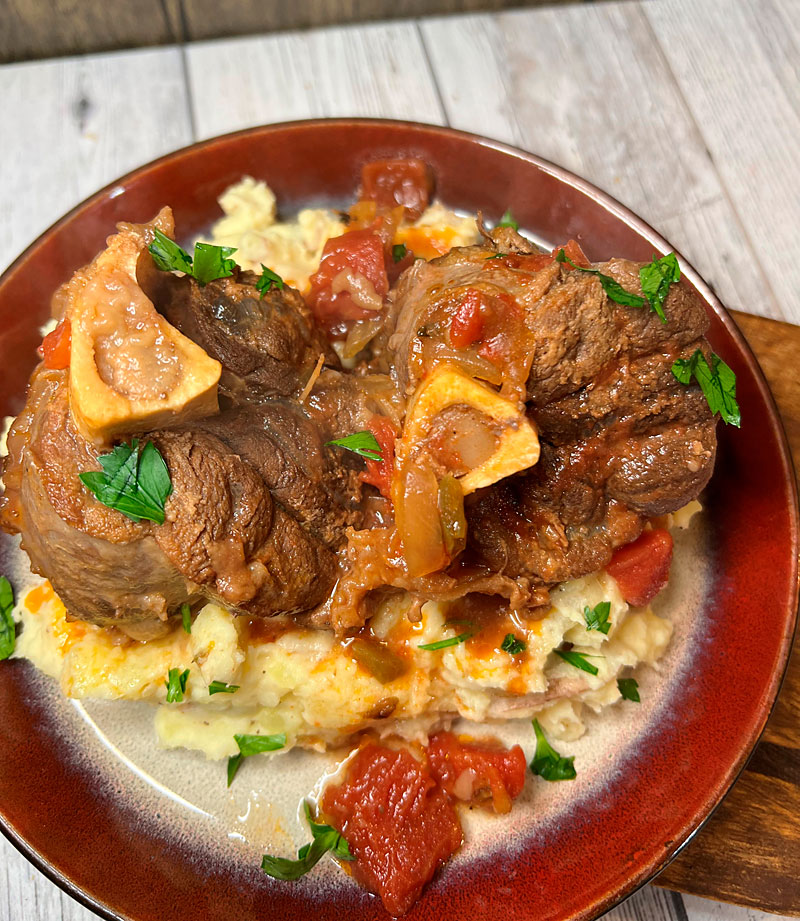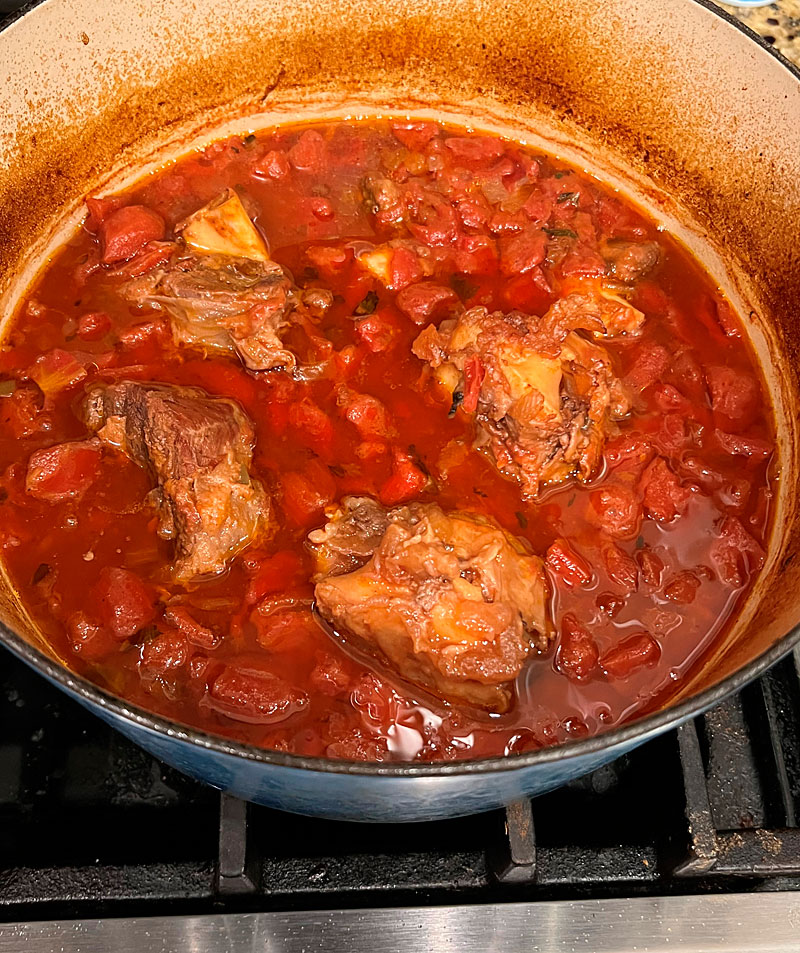 Don’t let this great cut of meat end up in hamburger patties
Don’t let this great cut of meat end up in hamburger patties
While the traditional Osso Buco uses veal, this recipe incorporates the most under used part of any deer…the shank. Time and time again, I have seen this part of the deer discarded in skinning sheds across the whitetail landscape or placed in the “grind” pile.
Once you try this recipe, I am confident that it will change your thought process and you can impress all of your friends at hunt camp. The shank is the part that exists below the knee of each leg of the deer.
I typically freeze my shanks whole. When I am ready to cook them, I cut them into 2 inch sections while partially frozen. This makes the cutting process much easier. I then wrap each section with butcher’s twine to keep the meat from falling off of the bone during the cooking process. It can be served over mashed potatoes, polenta, egg noodles or rice.
Pork shanks can be substituted for the venison shank.
 INGREDIENTS:
INGREDIENTS:
- Four to eight venison shanks cut into 2” sections and wrapped with butcher’s twine
- Flour to dredge shanks
- Enough vegetable oil to cover the bottom of your dutch oven
- Salt
- Pepper
- 2 Tbsp. tomato paste
- 28 oz. can crushed tomatoes
- 1 onion – chopped
- 1 bell pepper – chopped
- 2 cups beef stock – I prefer homemade venison stock
- 1 cup red wine
- 2-3 dashes hot sauce
- Seasoning to taste
- Prepared starch of choice
SPECIAL EQUIPMENT:
- Dutch oven
- Butcher’s twine
PREPARATION: Serves 4
- Preheat your oven to 300 degrees Fahrenheit.
- Season your shanks with salt and pepper, then lightly coat your shanks in flour.
- Using the vegetable oil, brown all sides of your shanks in cast iron dutch oven over medium heat.
- Once browned, transfer the meat onto a plate.
- Sauté your onions and bell peppers in the dutch oven until translucent. Add the remaining ingredients to the dutch oven.
- Return the browned shanks to the dutch oven. There should be just enough liquid to cover the shanks (if not, you can add water to cover).
- Cover and place in oven for 3-4 hours, depending on the size of the shanks, stirring occasionally.
- Remove from heat.
- Carefully snip the butcher’s twine with a pair of scissors.
- Serve over your desired starch.


